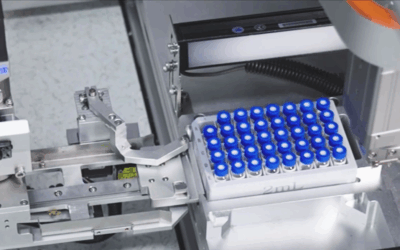Why are GLP Toxicology Studies Important?
Good Laboratory Practice (GLP) regulations have played a critical role in raising the standards of drug development around the world for decades, establishing rules and criteria to ensure the quality and integrity of nonclinical safety data submitted to regulatory bodies.
GLP was first introduced in New Zealand and Denmark in 1972 and has since been adopted in countries worldwide, including the United States in 1978. It was introduced in response to growing concerns over the reliability and consistency of nonclinical safety data and continues to act as a crucial authority for conducting studies for regulatory submissions.
In toxicology, GLPs ensure that nonclinical safety data is as reliable and complete as possible. Regulatory bodies mandate GLP compliance for toxicology studies, so drug development companies must have a strong understanding of GLPs or work with a lab partner with experience and expertise in this area.
What are GLP toxicology studies?
The Organisation for Economic Co-operation and Development (OECD) defines GLP as a “quality system concerned with the organizational process and the conditions under which non-clinical health and environmental safety studies are planned, performed, monitored, recorded, archived, and reported.”
GLP regulations cover all nonnonclinical studies except Nonclinical PK evaluation that is not part of a GLP study. These regulations also cover the subsequent retention of records to support the study reconstruction if needed after completion. Regulators worldwide require GLP studies to provide the data for hazard risk assessment, which ultimately protects people and the environment before a product reaches the market.
GLP’s overriding purpose is to promote the development of reliable and robust test data. If a study is conducted in compliance with GLP, the data can be used for regulatory submissions with bodies around the world, avoiding the repetition of costly and time-consuming studies.
GLP standards focus primarily on the organization processes for performing studies and underline the importance of the following:
- Qualified staff working in the correct facilities with the proper equipment and materials.
- An established quality control system, documented by staff not involved in the study.
- A study plan.
- Safe working conditions.
- An optimal location for the study.
- Methods to avoid contamination.
- Proper quality and design of apparatus, reagents, and test system.
- Exact labeling.
When are GLP toxicology studies needed?
Drug developers should adhere to GLP standards for most nonclinical toxicological studies, including those required for IND submission. Sponsors and lab testing partners must comply with regulations concerning GLP in the United States, the European Union, OECD countries, and China.
Occasionally, drug sponsors will conduct non-GLP studies to explore preliminary safety data to obtain the ADME properties of a drug. This process would then include further studies where GLP is mandated. This can help minimize the risk of failure during preclinical studies.
The benefits of GLP toxicology studies
GLP toxicology studies offer many benefits to drug developers, regulators, and patients.
Quality and validity. GLP toxicology studies emphasize the quality and validity of test data by ensuring the correct processes are in place to collect the best data possible. This allows reconstruction of study data if needed. If the data is of high quality and validity, it can be used for detailed reconstruction of studies after regulatory approval.
Uniformity: GLPs ensure that large and small drug developers conduct uniform studies no matter where they are in the world. This makes life easier for regulators and helps lower the risk of failed submissions.
Safety: If the safety data collected is of the highest quality, the final product sent to market will be safer for patients.
Efficiency: Adhering to GLP principles enables greater efficiency for drug developers and lab partners. Adherence to GLP will assure the quality, validity and integrity of facilities and their scientific studies that support regulatory decisions by government agencies.
Long-term success: By conducting efficient GLP toxicology studies, drug developers are setting themselves up for future success, confirming the scientific validity of their product and its commercial viability through public trust in its safety.
A final word
GLP toxicology studies are an absolutely crucial part of the drug development process. By following the principles of GLP, drug developers can ensure their safety data is reliable, robust, and repeatable. This will help guarantee compliance with regulations, no matter where they make their submissions and will save time and money further down the line. The easiest way to ensure that toxicology testing is conducted with GLP principles in mind is to work with a lab partner to whom these standards are second nature. This will remove one of the many stresses of drug development and bring crucial drugs to market faster and more efficiently.
As a global company with operations across Asia, Europe, and North America, WuXi AppTec provides a broad portfolio of R&D and manufacturing services that enable the global pharmaceutical and life sciences industry to advance discoveries and deliver groundbreaking treatments to patients. Through its unique business models, WuXi AppTec’s integrated, end-to-end services include chemistry drug CRDMO (Contract Research, Development and Manufacturing Organization), biology discovery, preclinical testing and clinical research services, helping customers improve the productivity of advancing healthcare products through cost-effective and efficient solutions. WuXi AppTec received an AA ESG rating from MSCI for the fourth consecutive year in 2024 and its open-access platform is enabling around 6,000 customers from over 30 countries to improve the health of those in need – and to realize the vision that “every drug can be made and every disease can be treated.”


